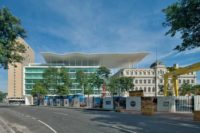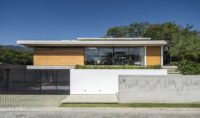There was rapid growth of the favelas because, until the My House My Life program, there was no public-housing program in Brazil. When I became an architect, there was a real crisis: How do you become an architect if there is no architecture?
But this led to something interesting for my generation. Since there was no work available when we graduated, many of us opened our own offices, because we had to 'invent' work. Together we were trying to figure out the possibilities, trying to connect the dots. It is very different compared to the generation coming out of school today, that have jobs waiting for them. Despite the crisis, it was in many ways a creative and inventive time. I worked on designing canopies and other basic infrastructure for street vendors in the old market of Belém, while a friend went on to do something similar for the market in one of Rio's favelas, helping formalize what was still then a highly informal part of city life.
In Brazil, migration to the cities was a phenomenon of the 1970s and 1980s. I like to think that, compared to China, we have an advantage because the size of our cities has stabilized, so we more or less know what their problems are. We have been an urban society for some time, which is a cause for optimism, because people moved to cities for the greater opportunities there. For me, cities are more places of opportunities than problems.”








